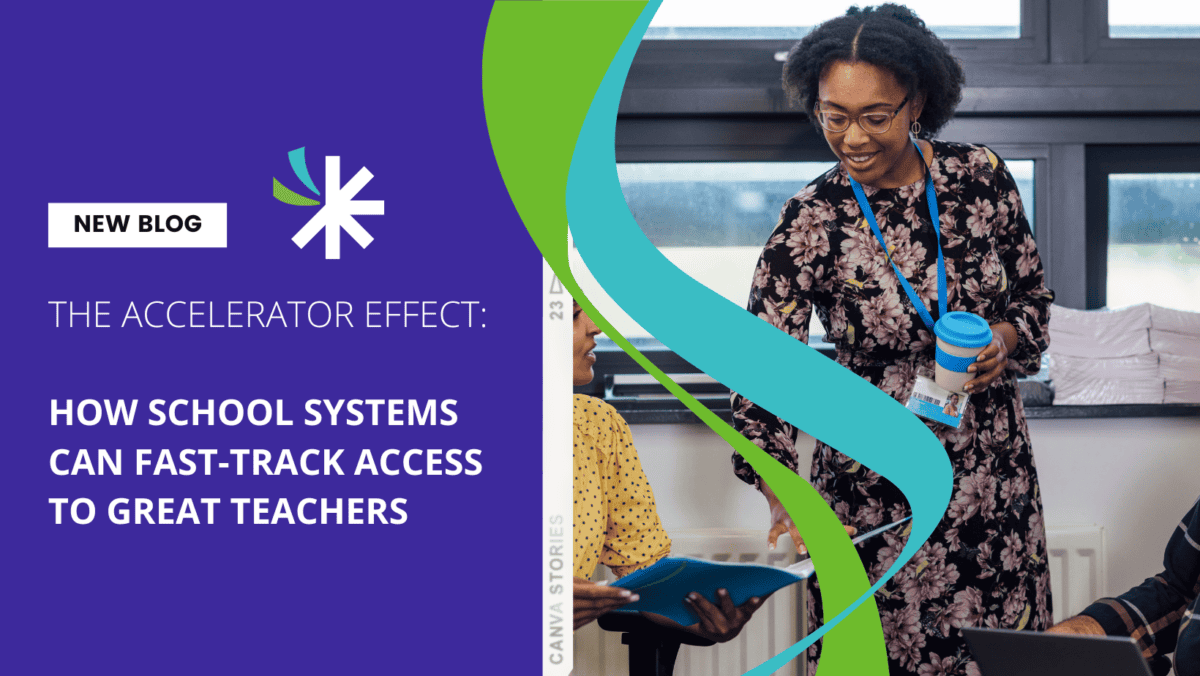Written by Danielle Pickens, USHCA Chief Program Officer & Jody Buchheit Spolar USHCA Partner
Research consistently shows that students who need effective teachers the most – students of color, low-income students, and students with disabilities – are often the ones who have them least. These disparities in access have a profound effect on students’ futures. Research from the Brookings Institution shows that students assigned to effective teachers are more likely to attend college, earn higher salaries, and are even less likely to have children as teenagers.
At USHCA, we’re committed to reducing human capital disparities students experience. We’ve been working alongside six school districts from across the nation, with the generous support of the KPMG Foundation, in our Access to Effective Teachers Accelerator, a cohort-based learning experience to identify and address disparities in access to effective teachers for high needs students. Our journey has yielded valuable insights so far in what it takes to make deep change in persistent patterns in access to effective teachers.
Lessons Learned to Date
Our collaboration with Atlanta Public Schools, Baltimore City Public Schools, Chicago Public Schools, School District of Palm Beach County, School District of Philadelphia, and Memphis Shelby County Schools, has so far revealed several key takeaways others can learn from to reduce disparities in access to effective teachers:
Context Matters: One-size-fits-all solutions won’t work. School systems, even those with similar characteristics, face unique challenges. Factors like data infrastructure, political climate, leadership turnover, and union relationships influence how this work unfolds.
- Questions to Consider: What are the unique factors in your school system that can help or hinder efforts to reduce disparities? How will you leverage your strengths and address potential challenges specific to your context?
Change Takes Time: Long-term commitment is crucial. Building buy-in, analyzing data, funding solutions, and implementing changes require sustained effort. This is a multi-year process that needs ongoing stakeholder engagement.
- Questions to Consider: How might you build a broad coalition of stakeholders invested in long-term change? What steps can you take to ensure continued momentum, commitment, and resources over time? What can you learn from previous change efforts in your school system?
Data is a Compass: High-quality differentiated data can help pinpoint specific actions or processes that are contributing to access challenges within your school system. It’s not just about the amount of data, but the questions you ask. Crafting insightful data questions allows data to illuminate disparities and guide effective interventions.
- Questions to Consider: What data is currently available in your district to help understand patterns in students’ access to teachers? What questions can you ask of this data to identify disparities in teacher access? What additional data collection efforts might be necessary to gain a more complete picture?
Dig Beyond Surface-Level Solutions: Sustainable change requires identifying and addressing root causes. Why are things happening the way they are? What levers can we use to shift the current dynamics? This may require challenging the status quo and established procedures. For example, if you hope to have more experienced teachers in specific schools, you may need to look at how you currently place student teachers.
- Questions to Consider: What are the long-standing policies, practices, or beliefs that contribute to these disparities? Who is invested in them and what will it take to create a viable alternative to current practices?
Policies Outlast People: Leadership turnover is a reality in many of the school systems across the nation. Improvements in access to effective teachers need to be reflected in policies and procedures, not just temporary initiatives that may shift with new administrations. This ensures sustainability beyond leadership changes.
- Questions to Consider: In what ways can you cement change should there be a leadership transition? How might you track progress and success over time to make the case beyond current leadership?
High-Needs School Need Added Supports: Attracting and retaining high-quality teachers and leaders is particularly challenging in high-needs schools. Financial incentives alone are not enough. Addressing working conditions and offering meaningful career pathways are crucial for long-term success.
- Questions to Consider: What strategies can you implement to make high-needs schools more attractive to strong teachers and leaders? How can you create a supportive environment and provide career development opportunities to retain these educators?
The Road Ahead
The path to ensuring at least equal access to effective teachers isn’t an easy one, but it deserves the effort. The knowledge gleaned from our Accelerator districts is ongoing and we’re excited to continue to share our learnings with you. If you have questions or insights to share, please don’t hesitate to reach out to our team here.

